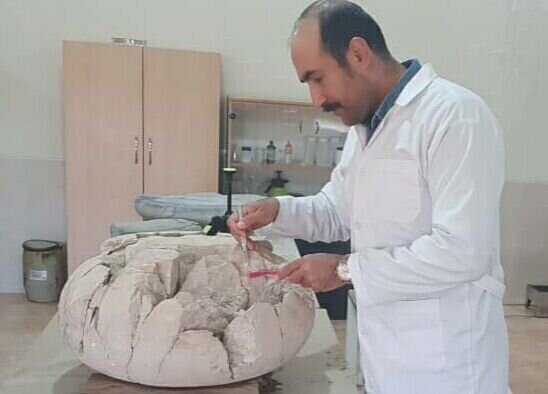Restoration laboratory launched in Persepolis

TEHRAN – A restoration laboratory dedicated to ancient relics and ruins has recently been launched on the premises of the UNESCO-registered Persepolis.
“A laboratory and workshop for restoration of cultural and historical objects opened in Persepolis on Monday… it is equipped with necessary tools, equipment, and material needed for cultural heritage experts,” IRNA quoted Hamid Fadai, the director of the World Heritage site, as saying on Monday.
In this workshop and laboratory, historical monuments including pottery, inscriptions, stone fragments of Persepolis reliefs, glazed bricks, tablets, and seals, etc. are being treated, cultural heritage expert Mohammadreza Alikhah said.
Experts at the laboratory are qualified to help restore physical damage, biological damage, and chemical damage caused by corrosion, sediments, discoloration, etc., Alikhah added.
Persepolis, also known as Takht-e Jamshid, whose magnificent ruins rest at the foot of Kuh-e Rahmat (Mountain of Mercy), was the ceremonial capital of the Achaemenid Empire. It is situated 60 kilometers northeast of the city of Shiraz in Fars province.
The royal city of Persepolis, which ranks among the archaeological sites which have no equivalent, considering its unique architecture, urban planning, construction technology, and art, was burnt by Alexander the Great in 330 BC apparently as revenge to the Persians because it seems the Persian King Xerxes had burnt the Greek City of Athens around 150 years earlier.
The city’s immense terrace was begun about 518 BC by Darius the Great, the Achaemenid Empire’s king. On this terrace, successive kings erected a series of architecturally stunning palatial buildings, among them the massive Apadana palace and the Throne Hall (“Hundred-Column Hall”).
This 13-ha ensemble of majestic approaches, monumental stairways, throne rooms (Apadana), reception rooms, and dependencies is classified among the world’s greatest archaeological sites.
The ancient region, known as Pars (Fars), or Persis, was the heart of the Achaemenid Empire founded by Cyrus the Great and had its capital at Pasargadae. Darius I the Great moved the capital to nearby Persepolis in the late 6th or early 5th century BC. Alexander the Great defeated the Achaemenian army at Arbela in 331 and burned Persepolis apparently as revenge to the Persians because it seems the Persian King Xerxes had burnt the Greek City of Athens around 150 years earlier.
AFM
Leave a Comment